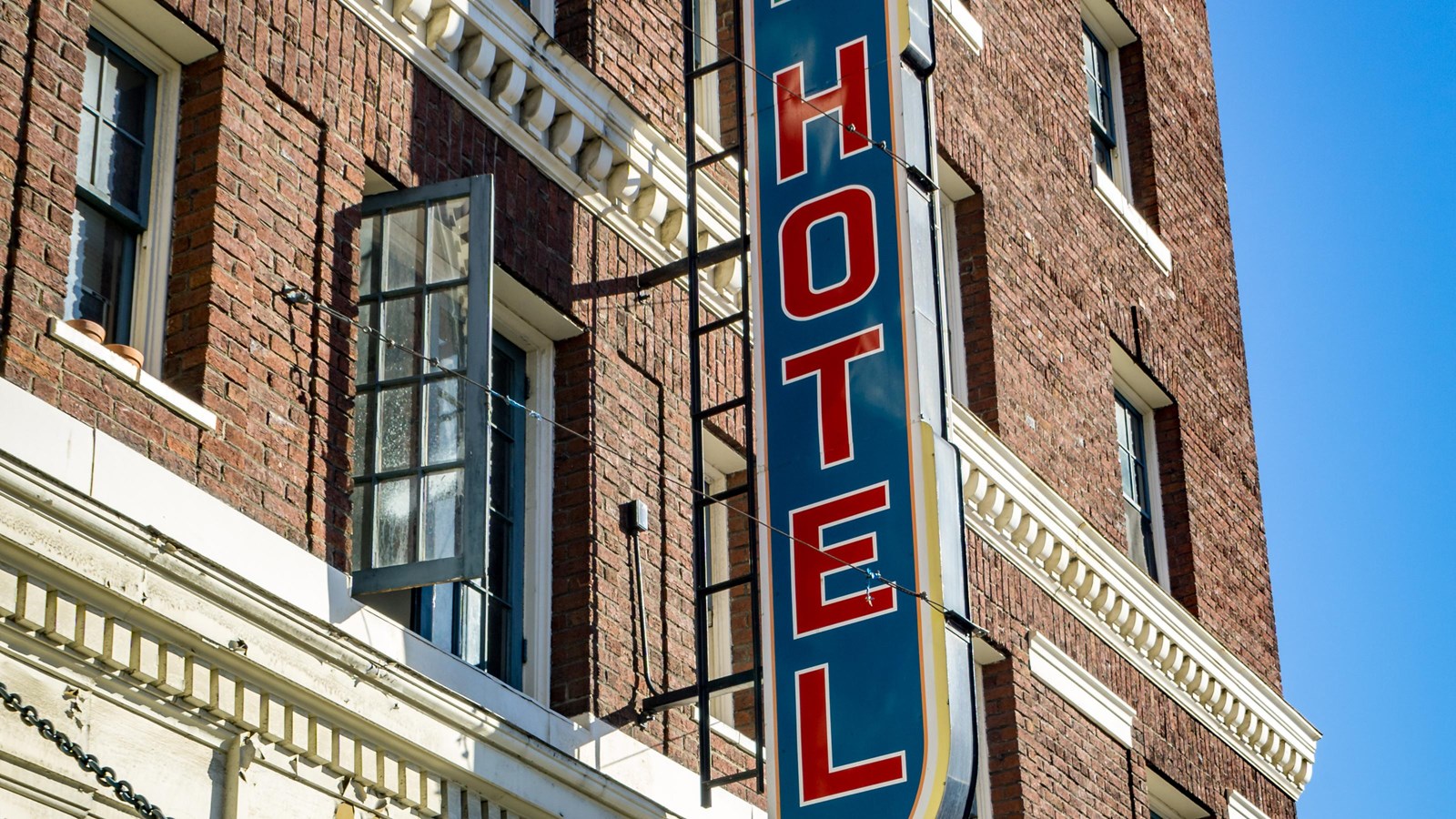Last updated: March 12, 2025
Place
N.P. Hotel (#11)

Alabastro Photography. Courtesy of Wing Luke Museum.
Quick Facts
Location:
304-310 6th Ave S
Significance:
Also known as: The N.P.
Mile: 0.32
“When I first came here everything was so big. We were on the farm in Japan, just a one-story house. I had never seen a building so high, the N.P. Hotel, the building that was to be our house. I couldn’t get over it.” - Yukiko Fujii, who was eight years old when she and her mother left Hiroshima to join her father, Frank Niroku Shitamae, in Seattle
Niroku Shitamae and a group of Japanese businessmen purchased the N.P. Hotel shortly after its completion in 1914. An anchor of Nihonmachi, the N.P. Hotel was a favorite stopping point for Asian immigrants arriving by rail, seeking jobs in Seattle. It was a classy establishment offering elevator service and running water.
During World War II, when Japanese Americans were forcibly removed from Seattle, a day clerk named Andy Togin took care of the hotel. After the War, Shitamae returned to resume management of the hotel. It was sold to Yutaka Hirano in the early 1960s and then to Jack Buttnick.
By the early 1970s, the N.P. had succumbed to the deterioration of age. It closed its doors in 1973. The International District Improvement Association (InterIm) purchased the hotel in 1991 and renovated an important residential and commercial cornerstone to the once thriving Nihonmachi. The building now yields 63 units of low-income housing and a refurbished space for Maneki restaurant.
Be sure to check out the hotel’s south wall with its towering restored painted brick sign, a hallmark of historic buildings in the area.
Uncle Bob Santos shared some memories of his late father, Sammy Santos. A former prize fighter, Sammy lost his eyesight in 1945 due to boxing injuries. He lived in the N.P. Hotel from the early 1940s to 1952.
“In hotels it was 80 to 95 percent male, a lot of them Filipinos. My dad had a small room, 9 feet by 13 feet. Two or three prostitutes would come in around dinnertime and they would bring their own dish and fork with them. Someone would bring whiskey and we all sat around Dad’s bed. It was always like a party. There would be an early dinner, about four or five o’clock. Then by six o'clock, everyone would be gone.
“You’d see the cycle of life – rejected suitors coming into the room drunk, pouring their hearts out on my dad’s shoulder because a girlfriend left with some sailor. They wanted to win at the gambling hall so they could send for their families in the Philippines or win enough money to go back as rich men. And of course, no one did that; they all lost their money.”
“When I first came here everything was so big. We were on the farm in Japan, just a one-story house. I had never seen a building so high, the N.P. Hotel, the building that was to be our house. I couldn’t get over it.” - Yukiko Fujii, who was eight years old when she and her mother left Hiroshima to join her father, Frank Niroku Shitamae, in Seattle
Niroku Shitamae and a group of Japanese businessmen purchased the N.P. Hotel shortly after its completion in 1914. An anchor of Nihonmachi, the N.P. Hotel was a favorite stopping point for Asian immigrants arriving by rail, seeking jobs in Seattle. It was a classy establishment offering elevator service and running water.
During World War II, when Japanese Americans were forcibly removed from Seattle, a day clerk named Andy Togin took care of the hotel. After the War, Shitamae returned to resume management of the hotel. It was sold to Yutaka Hirano in the early 1960s and then to Jack Buttnick.
By the early 1970s, the N.P. had succumbed to the deterioration of age. It closed its doors in 1973. The International District Improvement Association (InterIm) purchased the hotel in 1991 and renovated an important residential and commercial cornerstone to the once thriving Nihonmachi. The building now yields 63 units of low-income housing and a refurbished space for Maneki restaurant.
Be sure to check out the hotel’s south wall with its towering restored painted brick sign, a hallmark of historic buildings in the area.
Uncle Bob Santos shared some memories of his late father, Sammy Santos. A former prize fighter, Sammy lost his eyesight in 1945 due to boxing injuries. He lived in the N.P. Hotel from the early 1940s to 1952.
“In hotels it was 80 to 95 percent male, a lot of them Filipinos. My dad had a small room, 9 feet by 13 feet. Two or three prostitutes would come in around dinnertime and they would bring their own dish and fork with them. Someone would bring whiskey and we all sat around Dad’s bed. It was always like a party. There would be an early dinner, about four or five o’clock. Then by six o'clock, everyone would be gone.
“You’d see the cycle of life – rejected suitors coming into the room drunk, pouring their hearts out on my dad’s shoulder because a girlfriend left with some sailor. They wanted to win at the gambling hall so they could send for their families in the Philippines or win enough money to go back as rich men. And of course, no one did that; they all lost their money.”
